Bus funding: Where would it make the most difference?
- Published
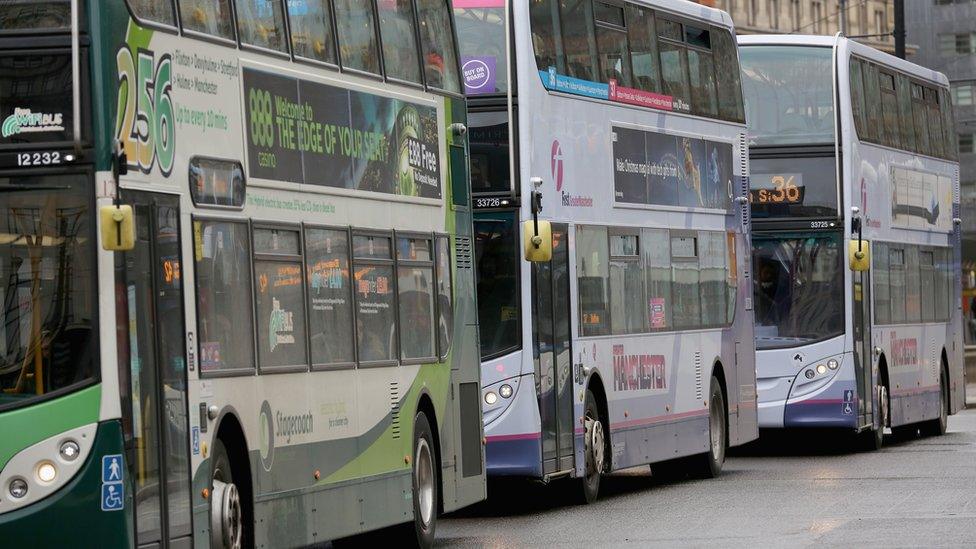
About 4.3bn journeys were made by bus in England in 2018-19
Boris Johnson is pledging £5bn over five years to boost bus services and cycling in England and campaigners want it to restore "lost" routes in "disconnected" rural areas. Where would new bus funding make the most difference?
More than 4 billion journeys are made by bus every year in England, but the number has been in decline.
Transport campaigners blame this on cuts in funding, with local and central government support for bus services having declined by more than £800m, nearly 30%, over the past decade.
The new funding announced by the government promises "essential" investments that "people want to see", according to the Chancellor, Sajid Javid.
How much is spent on buses already?
The £5bn being promised by the Prime Minister on Tuesday is for five years with new priority routes for buses and 4,000 "zero-emission buses" in England and Wales.
As local authorities' and central government budgets have been cut since 2010, the overall amount of public money spent on running bus services has also been falling.
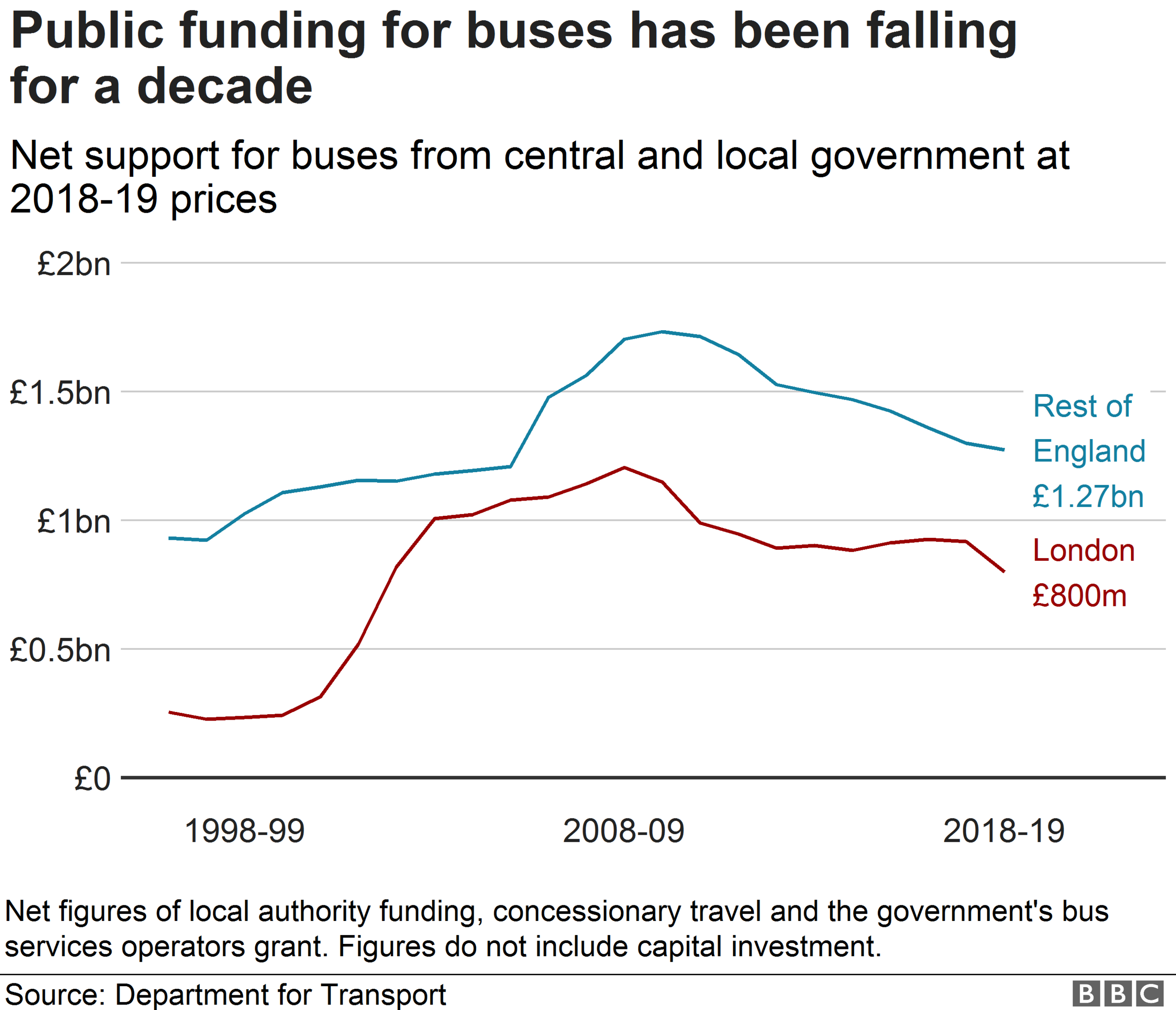
According to the Department for Transport (DfT) just over £2bn was spent in 2018-19.
This is down £834m on 2008-09, when that year's spending is adjusted for inflation, but still higher than 20 years ago.
Meanwhile bus fares increased 3.3% last year, which was faster than the Consumer Prices Index rate of inflation, 1.9%.
DfT figures show fares in England have risen 71% since 2005.
Where would the funding make the most difference?
We don't yet know which areas will see the biggest shares of the money although the government promises it will benefit "every region outside London".
Official government figures reveal more than half of all England's bus journeys are now made in London.
Outside the capital, Brighton and Hove had the most journeys per head of population in 2018-19.
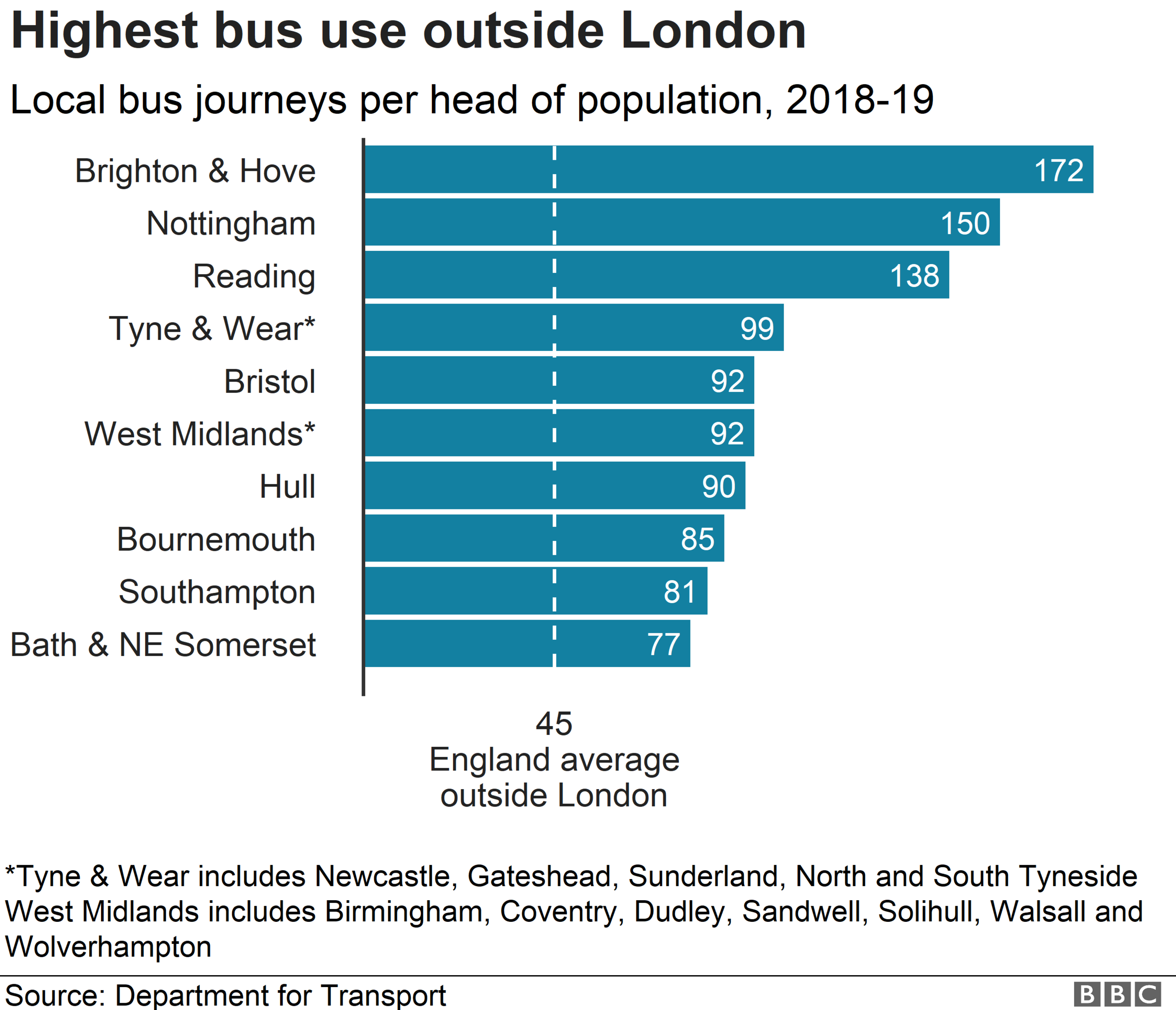
The Campaign for Better Transport said the new funding was a "significant step change" and welcome news for communities that had "borne the brunt" of cuts to services and "poor or non-existent local public transport in recent years".
A 2019 study by the charity found more than 3,000 local bus routes had been lost or reduced over the past decade.
Crispin Truman from countryside charity CPRE said rural communities had been "at the end of the queue" for too long and the funding could be a "lifeline".
He said: "If properly targeted, this investment could help tackle loneliness and isolation, reduce car dependency and slash our carbon emissions."

Local authorities will be able to bid for money for a new fleet of all-electric buses
Where has bus usage changed the most?
Councillor David Williams, from the County Councils Network, said shire areas had seen their funding for local bus services halved since 2010, while major cities had seen funding fall by 19%.
Mr Williams said: "As a result, buses are almost non-existent in some of the most rural and coastal areas where services are a lifeline, while county towns suffer from less frequent and more expensive services compared cities."
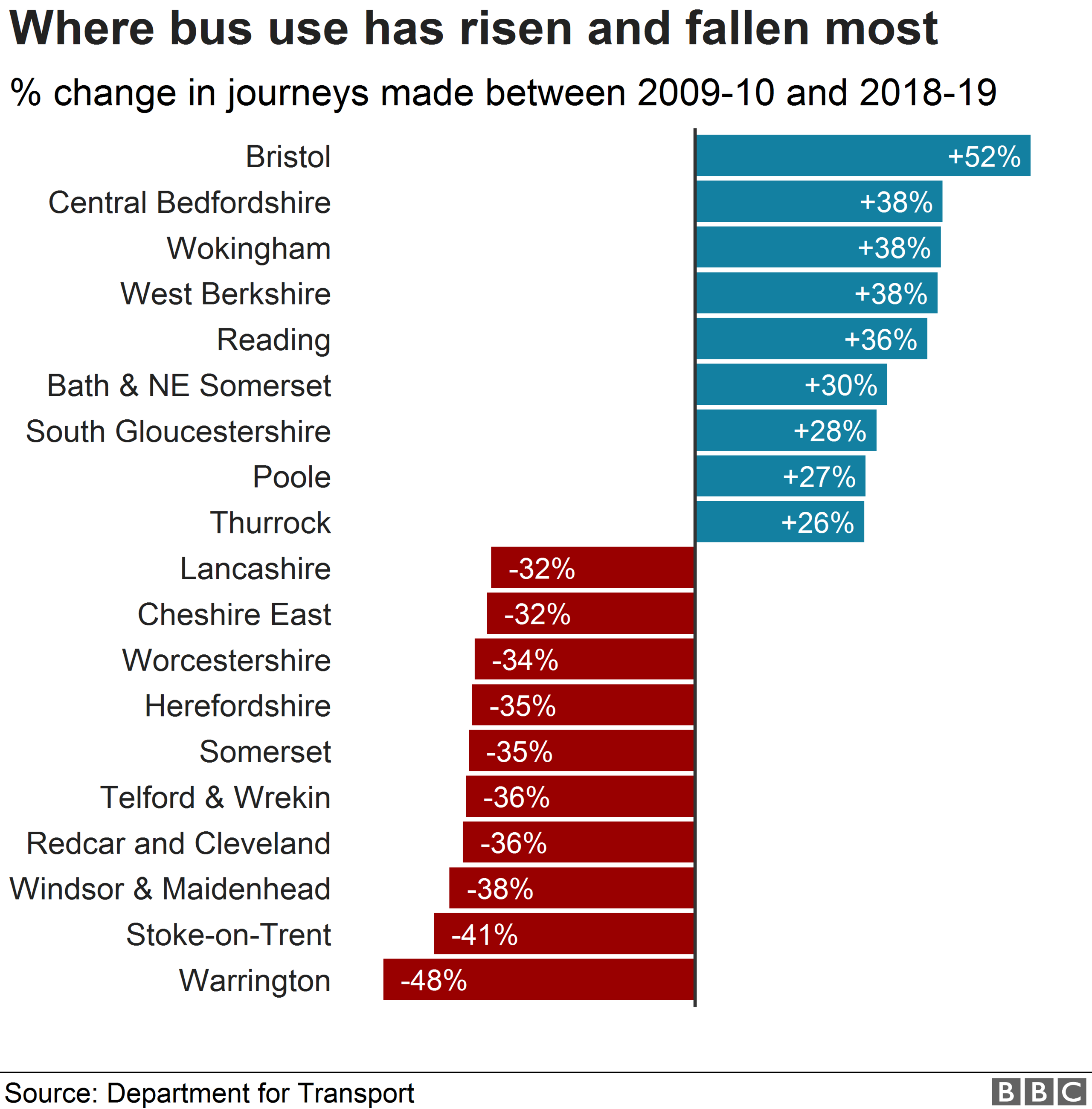

What's in the funding package?
According to the DfT the £5bn investment will include:
At least 4,000 new zero emission buses
More frequent services, including evenings and weekends
More 'turn up and go' routes which the government says means people will "not have to rely on timetables to plan journeys"
New bus priority schemes to make help buses avoid congestion
More "affordable, simpler" fares
250 miles of new, "high-quality" separated cycle routes and safe junctions in towns and cities
33,900buses used by local operators in 2018-19
4.32bnjourneys made by bus that year
1.2bnmiles travelled by bus in England
11.2%down on 2008-09
- Published25 October 2019
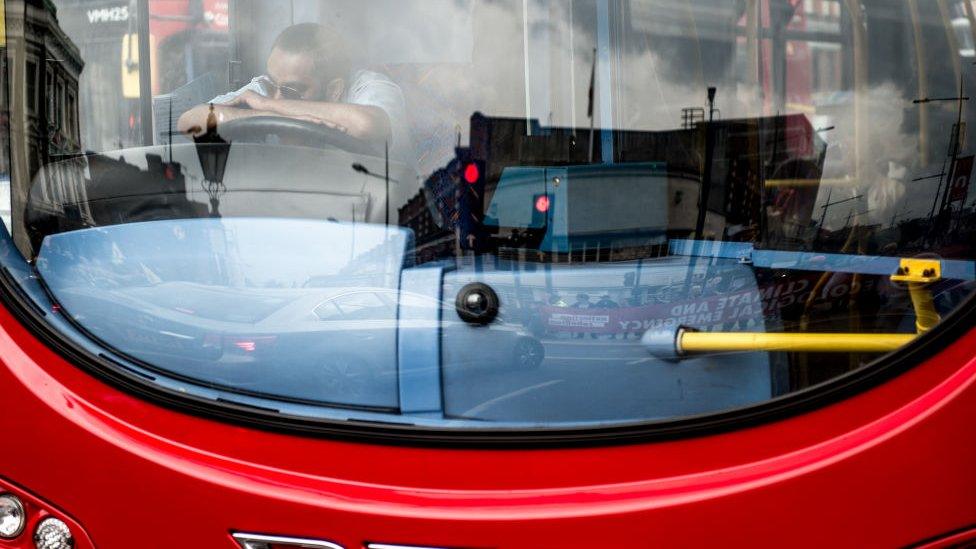
- Published6 February 2020
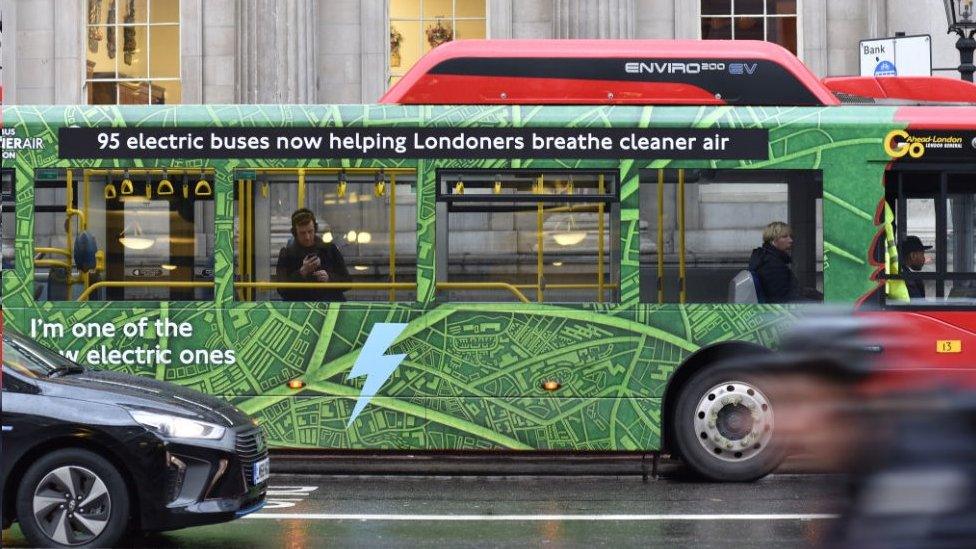
- Published6 February 2020
